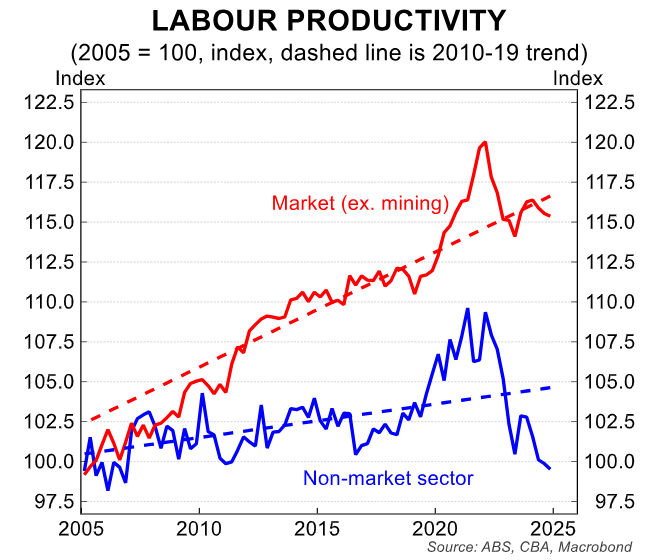The Q4 national accounts, released in March, revealed that Australians finally emerged from their two-year recession after recording positive per capita GDP growth of 0.1%.
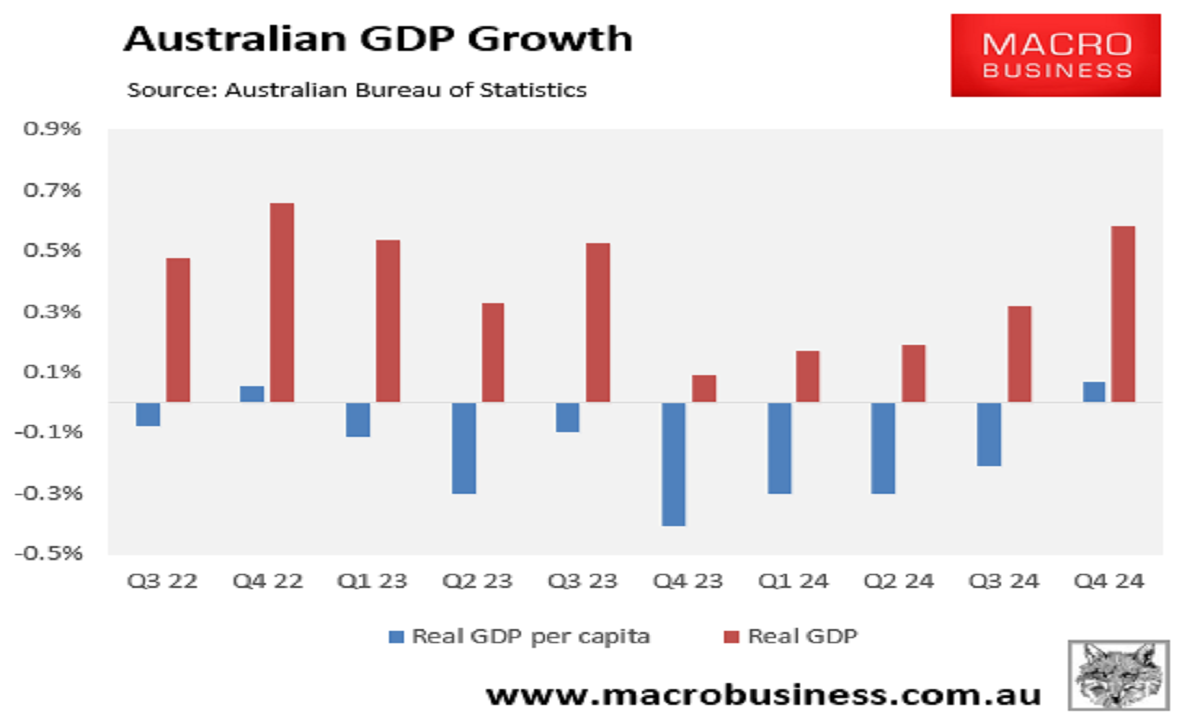
The latest OECD Economic Outlook interim report predicts only 1.9% aggregate GDP growth in 2025 and 1.8% growth in 2026, suggesting that Australia will remain in the slow lane.
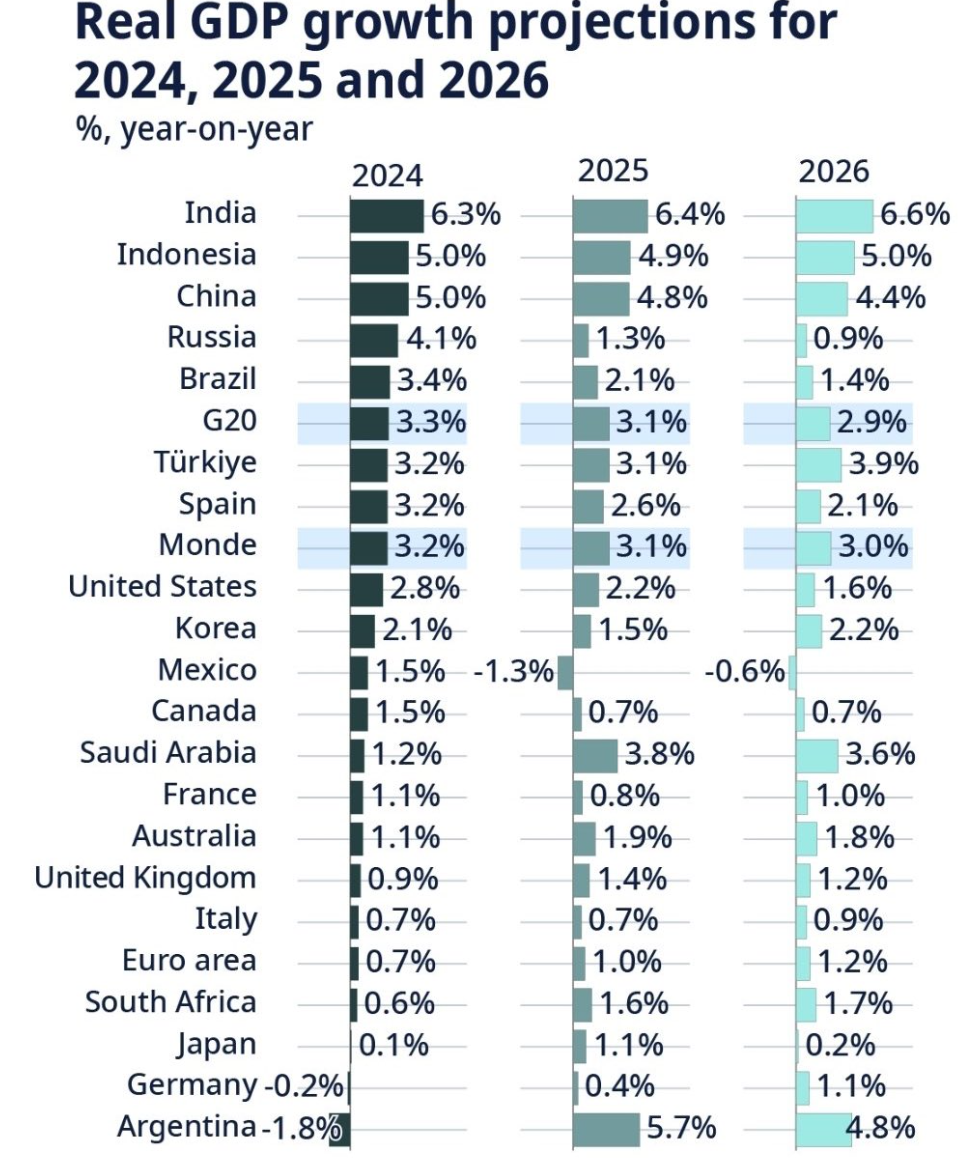
Source: OECD Economic Outlook, interim report, March 2025.
As shown above, Australia’s forecast growth is near the bottom of developed nations.
The March federal budget forecast that annual net overseas migration (NOM) will slow to 335,000 by Q2 2025 and to 225,000 by Q2 2027.

As a result, annual population growth is forecast to slow to 1.6% by Q2 2025 and to 1.2% by the outer years.
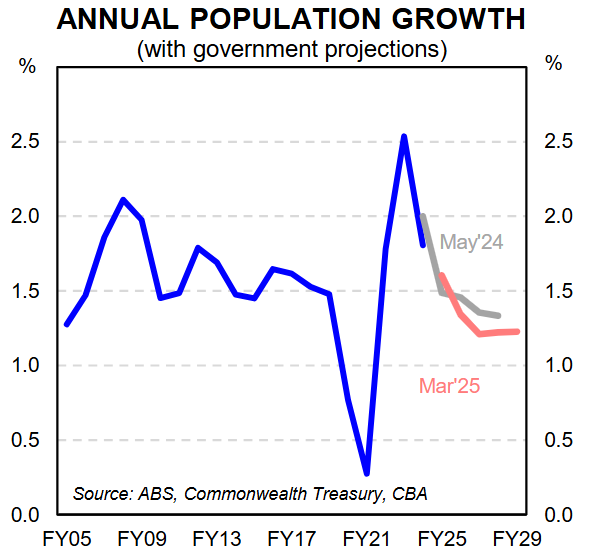
If true, these forecasts suggest that Australia’s per capita GDP growth will be around 0.5% in 2025 and similar in 2026.
However, the latest monthly arrivals and departures data from the ABS and the monthly labour force survey suggest that NOM has rebounded and is tracking well above the Budget’s forecast.
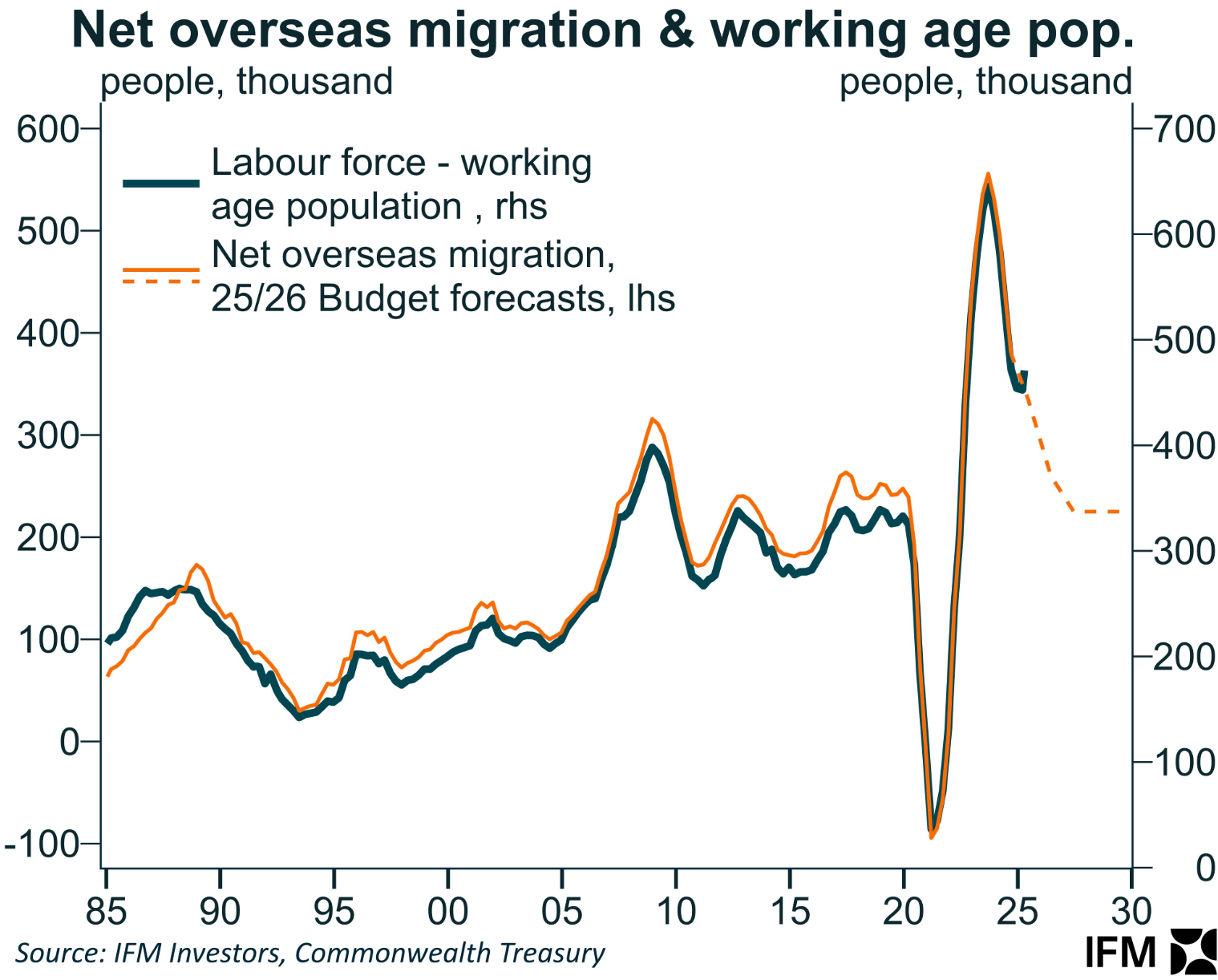
Regardless, Australia’s economy remains sluggish and heavily dependent on population growth.
Australia’s per capita GDP growth will not rebound to historical levels unless productivity growth rebounds.
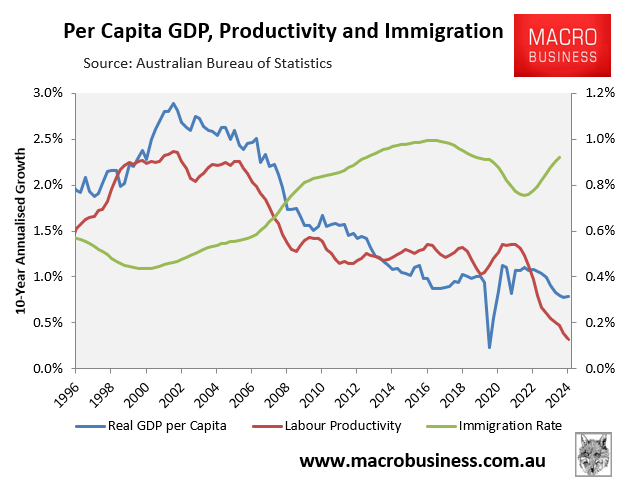
However, with capital shallowing via mass immigration and an expanding NDIS baked in, it is difficult to see how productivity growth can recover.
